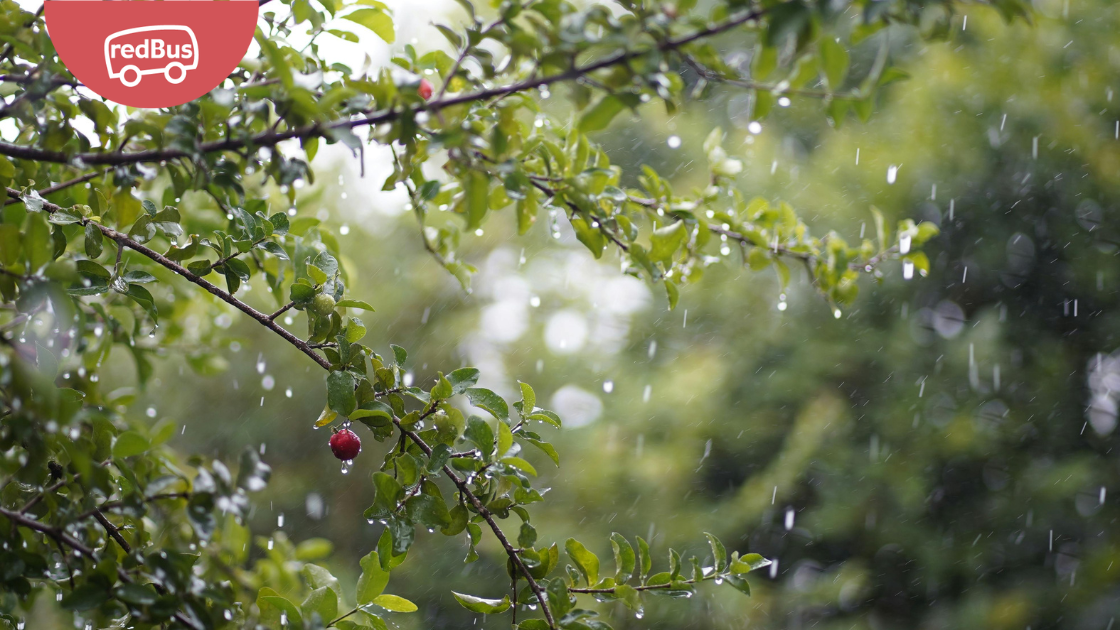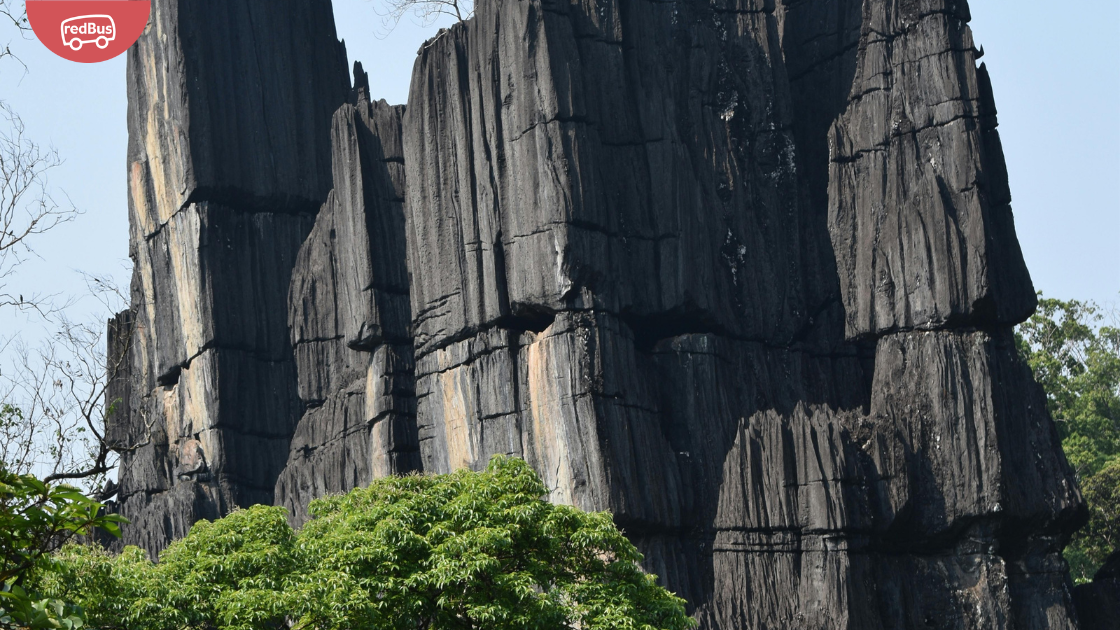Dedicated to the Goddess Shakti, the feminine head of Hinduism and the primary deity of Shakti, Shakti Pithas, which means “seat of power,” are places of worship. 51 shrines, several of which are mentioned in the scriptures, are significant among the 101 locations where the body parts of Lord Shiva’s spouse, Sati, fell. Mahavishnu used his Sudarshan Chakra to sever Sati’s body into 51 parts because he feared that the enraged Shiva’s tandava would destroy the universe. Many bits of her body, including her jewellery, dropped to the ground throughout the subcontinent. The 51 Shakti Peethas, each associated with one of the 51 letters of the Sanskrit alphabet, are these holy places. The most popular talks about shaktipeeth coming into existence are based on explanations of the story of goddess Sati’s death.
Some of the famous shaktipeeth to visit in India are the following—
1. Tripura Sundari Temple
Udaipur, which served as the previous capital of the Indian state of Tripura, is home to an old temple dedicated to Devi Tripureshwari, known as Tripura Sundari Temple. It is one of the most famous shaktipeeth to visit in India, with a square-shaped temple with a conical roof that Hindu pilgrims consider one of the 51 pitas. In the southwestern suburbs of Udaipur, at Matabari, it is stated that Mata Sati’s “right foot” fell. Due to the temple grounds’ resemblance to a tortoise, or “Kurma,” this “pithasthan” is also known as Kurma Pith. Countless numbers of animal sacrifices are done by visitors here because of which the grounds are as bloody as the temple’s vivid-red shikhara. During the spectacular Diwali holiday, devotees swarm to this location to dip in the fish-filled tank by the temple.
2, Shri Amarnath Cave Temple
Located in Jammu & Kashmir, India, the Amarnath cave Temple is a Hindu shrine. Around 141 km from Srinagar, the cave is located at 12,756 feet. Hinduism places great importance on it because it is one of India’s holiest sites. Also, it is believed that changes in the moon’s phases are why the Lingam starts to fade after the Shravan month. Lord Shiva is said to have given his consort and wife, Lady Parvati, an explanation of what life and eternity are all about in the location where the Amarnath Cave now exists. Sage Bhrigu is said to have found Amarnath first, according to tradition. During the 45 days around the Shravani Mela celebration in July–August, which coincides with the Hindu holy month of Shravan, pilgrims travel to the sacred location.
3. Kalighat Kali Temple
Located in Kalighat, Kolkata, West Bengal, India, the Hindu goddess Kali is the focus of the Kalighat Kali Temple. It is one of the most well-known sites in eastern India. Kalighat refers to the Ghat (riverbank) where the temple is situated and the Hindu deity Kali who resides there. It was believed that the first temple was just a little house. It was later converted into a legitimate temple, which King Manasingha ordered in the sixteenth century. The deity’s most notable attributes include a long gold tongue, four golden hands, and three enormous eyes. It is said to have been inspired by the idol of Mata Bhuvaneshwari.
The “Snan Yatra” is a special scriptural rite that the “Kalighat Kali Temple” performs to the highest degree of reverence. At the new moon of the Hindu month of Kartik, which falls between October and November, Kali Puja is performed. Every year, the festival of “Durga Puja” is likewise a wonderful and coveted event filled with magic.
4. Shri Mata Vaishno Devi Temple
The Hindu holy place of Vaishno Devi is perched at 5,200 feet atop Trikuta Hill in Katra in the Reasi district. It is regarded as one of the holiest Hindu pilgrimage sites in north India. Three naturally occurring rock formations called Pindis, found in the holy cave, are believed to represent the Mother Goddess Shakti and are worshipped in the temple in the shapes of Maha Kali, Maha Saraswati, and Maha Lakshmi. The Vaishno Devi Temple is reportedly millions of years old, according to a study. Also, it’s believed that the Pandavas constructed five stone temples in the holy cave next to Trikuta mountain. The Sri Mata Vaishno Devi Shrine Board looks after the temple’s grounds. Rail travel from Udhampur to Katra connects pilgrims to the temple. For those taking a flight, the shrine is most easily accessible from the Jammu Airport.
5. Chandranath Temple
The 350-meter-high Chandranath hill is where the Chandranath Temple is situated. It is a well-known Shakti Peeth in Bangladesh close to Sitakunda. The surroundings of the shrine are beautiful, looking at a panoramic view. The right arm of Goddess Sati is said to have fallen at this Temple in Hindu sacred writings. One of Devi Sati’s Shaktipeeth is this.
Around the middle of the eighth century, South Goa was ruled by Bhoja monarchs, who had Chandreshwar as their patron god. Chandrapur, after the god, was the name of their capital. The rock from which the Shivalinga was carved leaks whenever the full moon’s beams touch it. Every time there is a full moon, moonlight reaches Linga thanks to the temple’s design. The villagers believe that during the Kali Yuga, Lord Shiva pledged to visit Chandrasekhar Mountain. To participate in the Shiva Chaturdashi Puja, thousands of devotees travel to the Chandranath Temple each year.
6. Nalateshwari Temple
One of the 51 Shaktipeethas where pieces of Sati’s body were scattered is the Nalhateshwari Temple. The shrine was given the name Maa Nalateswari because it is said in mythology that this is where the goddess Shakti’s “nala,” or throat, fell. The Nalateshwari Temple is in West Bengal’s Birbhum district’s Nalhati town. Nalhati is a lovely location with peaceful surroundings and plateaus all around. Maa Nalateswri lives in a serene setting and resembles Kamakha and Kalighat Shakti peethas. In this Nalhati Shakti Peeth, special pujas are held during all festivals, particularly Durga Puja and Navaratri. As a mark of respect and commitment to God’s worship, some people continue to fast throughout these festivals. During the festival days, lights and flowers adorn the temple.
7. Tarapith Temple
Tarapith, another famous shaktipeeth to visit in India, is located on the banks of the Dwarka River in Chandipur Village, Birbhum District, West Bengal. Its name is said to come from the area where Sati’s eyeball fell. TaraMaa of Tarapith is another name for Kali. Tara is a two-handed form of Kali who wears snake garlands and is draped in saffron-colored threads. The Temple, on the other hand, is dedicated to Shiva’s destructive side, which manifests as Kali. Every day, she demands sacrifice to satisfy her bloodlust. As a result, goats are sacrificed on the temple altar every morning. The temple is open all year, and the surrounding area is teeming with the poor who come for free meals. The powerful ceremonies and anthems performed here further characterise this temple as exceptional.
8. Kamakhya Temple
The Kamakhya Devi Temple is located around 8 kilometres from Guwahati, the state of Assam’s capital, close to Dispur. It is one of the four holy Adi Shakti Peethas dedicated to Shakti. Between the 8th and the 17th centuries, it was constructed and rebuilt numerous times, and it is a sight to behold. In the shrine, Kamakhya Devi is represented by a large yoni in the bedrock. The yoni is kept moist all year by the water running through the steps leading to Garbhahriha. Even today, the water turns red for three days during the goddess’ menstrual period. The Tantrik sect of Hinduism considers Kamakhya Temple, which honours a woman’s ability to give birth and to be extraordinarily lucky. The ability to increase fertility is therefore well known for this location. Childless couples who strongly yearn to have a child go to this temple to worship the Mother Goddess.
9 Maa Taratarini Temple
The Maa Taratarini Temple is on a hilltop 30 kilometres north of Brahmapur, on the Rushikulya River’s south bank in Odisha. The hill is around 708 feet tall. One of the four main ancient Tantra Peetha and Shakti Peethas in India, the Tara Tarini Shakti Peetha is among the earliest Mother Goddess pilgrimage sites. The twins Tara and Tarini are said to have originated from the Goddess Sati’s two breasts, which are said to have fallen from her corpse onto the hills of Tara and Tarini. Two old stone statues with gold and silver embellishments embody the goddesses Tara and Tarini. The Tara Tarini Hill Temple hosts several festivals, the most significant of which is the Chaitra Yatra. Many thousands of devotees travel worldwide to see the Tara Tarini and complete their Manasika after receiving their wishes.
10. Vishalakshi Temple
Sri Kashi Vishalakshi Temple is located in Mir Ghat on the banks of the Ganges in Varanasi, Uttar Pradesh, India. It is said that Mata Sati’s earrings or eyes fell in Varanasi at this holy location. Devotees take a holy bath in the Gange’s water before worshipping Vishalakshi Maa. South Indian architectural design was used to construct Sri Vishalakshi Temple. There are numerous Shivlingams throughout the temple, and the Gopuram at the entrance is decorated with intricate woodwork. According to devotees, the goddess bestows success and wealth; therefore, performing puja, Jal, and chanting songs to her is very beneficial. The Vishalakshi Temple cheerfully celebrates Kajali Tij, the most significant Hindu festival for Indian ladies. Unmarried girls pray to Goddess Vishalakshi for their prince charming, childless mothers pray for a child, and unlucky people pray for luck.
11. Kamakshi Amman Temple
The temple is located in the holy city of Kanchipuram, which is close to Chennai in the Indian state of Tamil Nadu and is spread across five acres of ground. When Shiva was carrying the Goddess Sati’s body about, her Nabhi, or navel, had fallen here. It is also said to be the Nabhisthan, or the centre of the world, or at least the eastern hemisphere.
The Kamakshi Amman temple has existed for ages, dating back to the 7th century. It was founded under the guidance of the great Indian guru Adi Shankaracharya, whose teachings are still followed by the followers of the Goddess today. The temple’s image of the Goddess Kamakshi is seated. This position is referred to as Padmasana. It’s said that the Padmasana pose looks like a lotus. Before performing any Pooja on the primary deity, any Pooja is done to the Sri Chakra, which Adi Sankaracharya placed to appease Kamakshi Devi. People visit this temple to free themselves of Thirumana Dhosam and Puthira Dosham.
12. Jwalamukhi Temple
Hindu worshippers hold the revered and well-known Jwalamukhi Temple in Kangra Valley, Himachal Pradesh, in the highest regard. Devotees worship the flame inside the temple, which they believe to be the manifestation of Goddess Jwalamukhi, as this location is famed for having a temple devoid of any idols. Indian mythology states that the tongue of Sati dropped off the corpse at this location when Lord Vishnu cut through it. Even the Pandavas are thought to have visited this holy location. In the Indo-Sikh construction style, Jwalamukhi Temple was perched on a wooden platform next to a cliff. The structure is contemporary, with a golden dome, pinnacles, and a stunning sliding door made of silver plates. On the occasion of Navratri, the Jwalamukhi Devi Temple hosts fairs (melas) twice a year in the Bengali months of Chaitra and Ashwin.
There is no shortage of accurate information regarding the number of Shakti Peethas in Asia. All religious writings, including the ancient Indian Puranas, have varied perspectives. The Devi Purana is believed to be the most authentic source, but there are reportedly 51 Shakti Peethas. The Skanda Purana lists 18 Mahashakti Peethas, 16 of which are in India and the remaining two in Pakistan and Sri Lanka. The Assamese Kamakhya Temple is also included in the 18 Maha Shakti Peethas. India’s history and culture are inextricably linked to its temples. If you are interested in Indian culture, every temple is worth seeing because each has a unique history.
Conclusion
Embark on a Spiritual Journey to India’s Enchanting Shaktipeeths – Book Your Bus Tickets Now!
Discover the divine energy of India’s revered Shaktipeeths, sacred sites where the powerful Mother Goddess is worshipped in her various forms. Immerse yourself in the spiritual ambiance and witness the unique customs and rituals performed at these holy shrines.
Don’t miss the opportunity to embark on an unforgettable pilgrimage to these sacred sanctuaries, which are spread across the vast Indian subcontinent. Experience the serenity, blessings, and spiritual rejuvenation that these hallowed grounds have to offer.
Booking your bus tickets to visit these famous Shaktipeeths has never been easier! Our user-friendly platform offers seamless and hassle-free ticket booking, ensuring a comfortable and convenient journey to your spiritual destination. Choose from a wide range of bus operators, services, and amenities to suit your preferences and budget.
Don’t wait any longer – embark on a once-in-a-lifetime pilgrimage to these divine shrines and reconnect with the spiritual essence of India.







